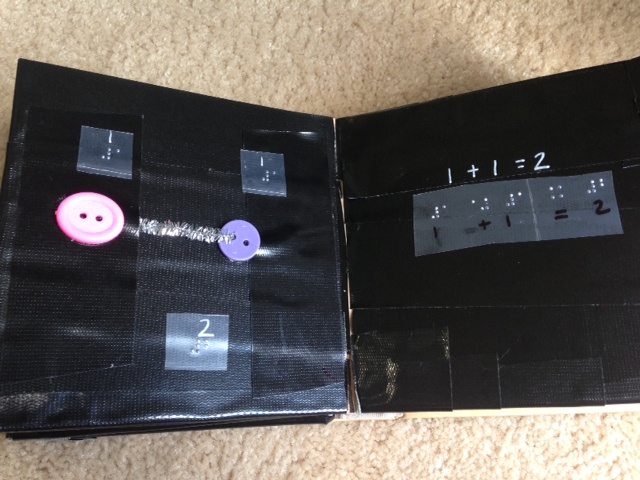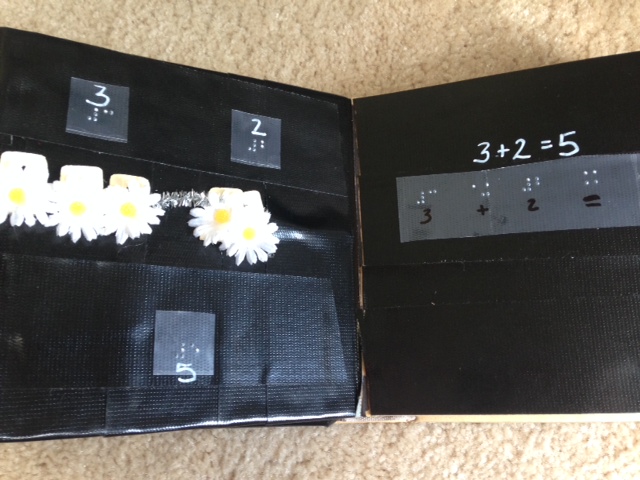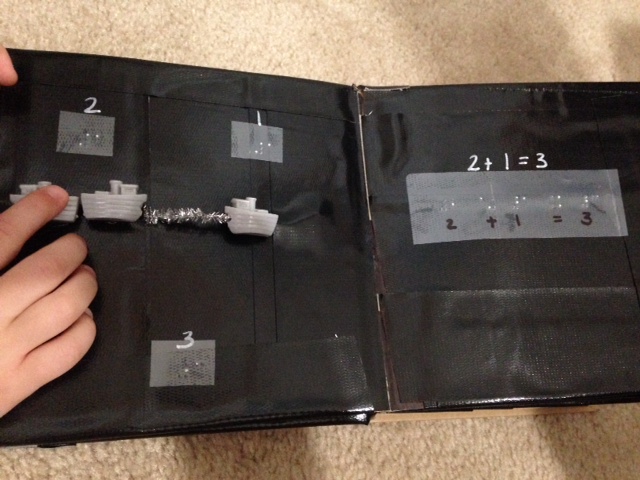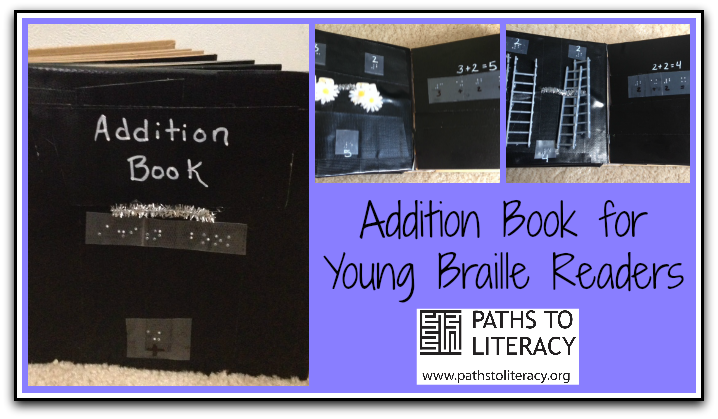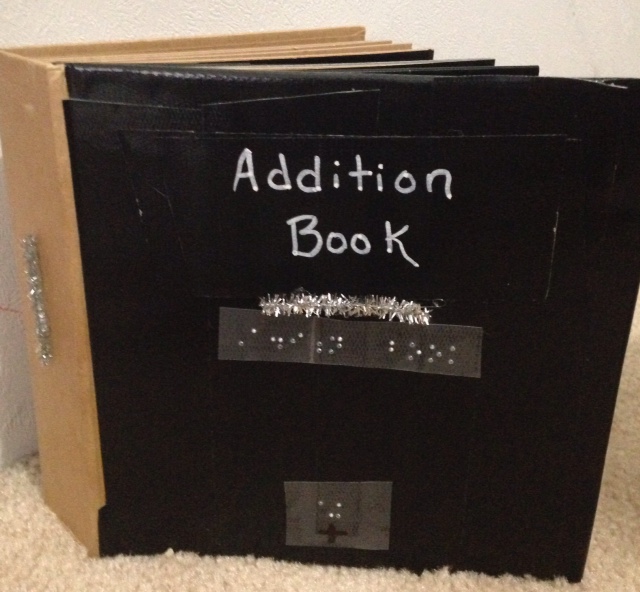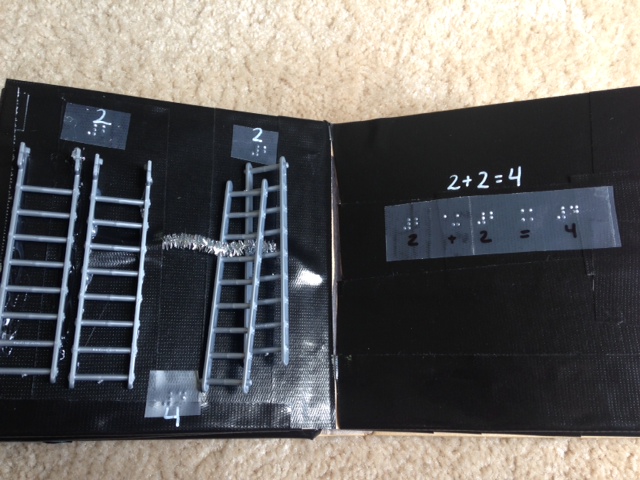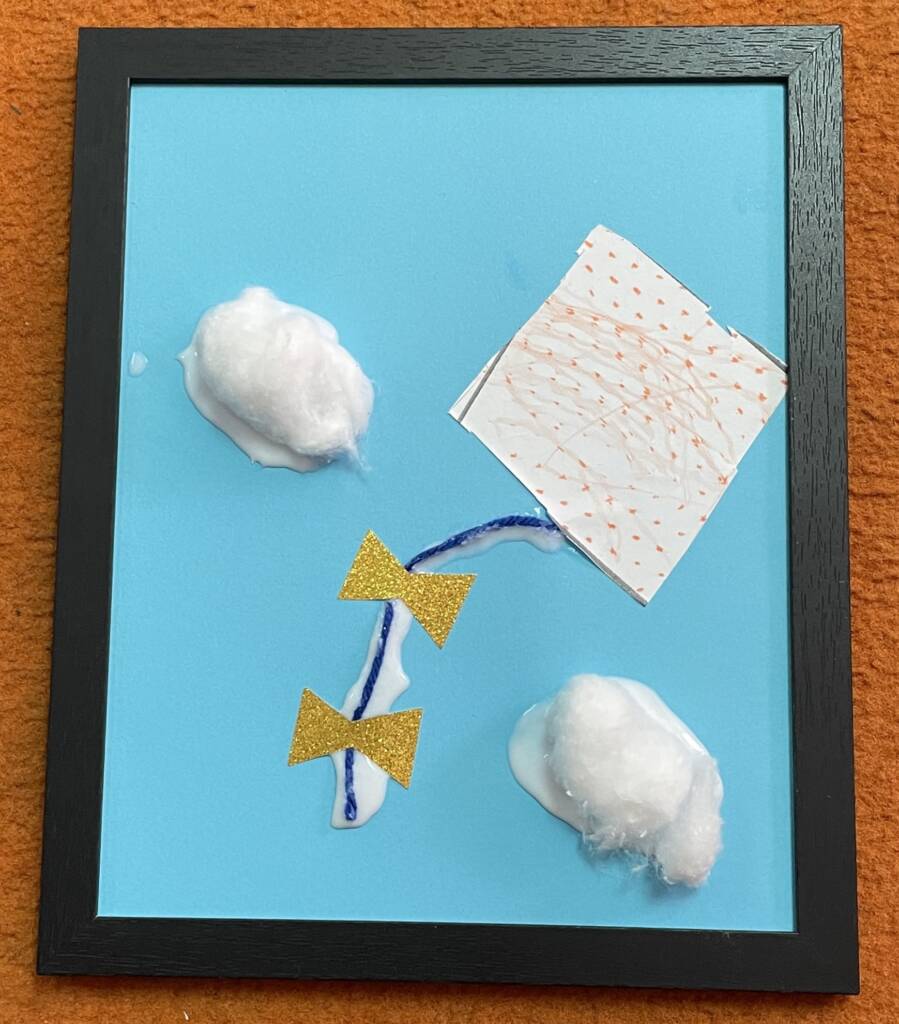My goal was to create a “math book” for my 6-year-old son who is deafblind. He will be entering first grade in the fall. I checked the first grade math standards and choose to focus on “addition”. The first grade standards state addition problems using numbers through 20, however, I chose to modify (personalize☺) my son’s book to use numbers 1-10.
The objective of this book is for my son to be able to add items together in a way that is motivating for him—using books! There are many ways this book can be used. The items can be counted that are “fixed” on to the page. Then the child can count the “movable” parts. Finally, they can slide the movable parts together with the fixed and “add” them together. There are many opportunities on the pages of this book to feel braille numbers and number sentences. I plan to create stories to match the number sentences as I read the book with my son.
Materials
- Chip board blank book (can be found at hobby stores such as Hobby Lobby and Michaels)
- A lot of black “Gorilla” duct tape☺
- Pipe cleaners
- Items that can be “strung” on the pipe cleaners
- Braille labels (if you do not know how to braille or do not have access to a brailler, contact your child’s TVI [Teacher of the Visually Impaired] to see if they can help).
- Hot glue gun
Things to consider about your child before beginning working on addition:
- Rote Counting Skills
- Number Recognition and Number Sense
- One-to-One Correspondence: can your child count a group of objects?
Does your child know…
- What numbers come before or after something?
- Understand… “How many?” “Which is more?” ” Which is Less?”
Activity Ideas
There are many things fun, practical things you can do at home to help your child be ready for addition! Here are just a few examples:
- Create counting books, such as these examples: Counting Book or Number Book
- Tell stories or sing songs that use numbers and number concepts
- Make counting and number sense an everyday ‘thing’ for example:
- Let your child help you count out snacks at snack time.
- Count rocks you find playing outside.
- At playdough time, count items you make.
- Use common household items to count or compare (like old keys, buttons, toys, etc.)
- Use numbers in every day “talk”, e.g. “Only five steps to get to the top!”
- “I need four plates to set the table” “We need to buy 5 bananas”
- “How many spoons do we need?” “Which has more, this bowl of fruit or this one?”
Variations
This book can be easily adapted/modified to fit the needs and LIKES of your child. For example:
- Use numbers 1-5
- Use numbers greater than 10
- Choose a theme throughout the book. For example: “Beach” theme with sand, little shovels, shells, towels, etc.
- You could add story problems in braille to match the number sentence
